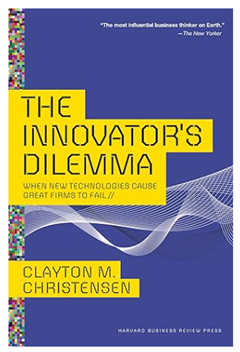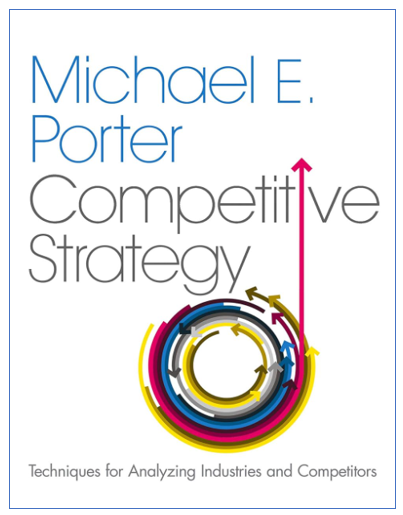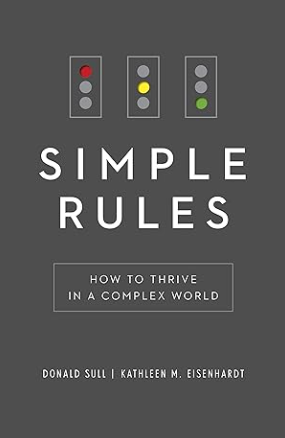Research marketing: How to promote our research
Marketing has been considered important in all aspects of activity related to relationship with other entities such as customer.

Marketing has been considered instrumental in all aspects of activity related to relationships with other entities as customers.
Furthermore, marketing is potent not only for commercialisation of products, but also for commercialisation/promotion of research results.
In this post, we will discuss the idea of marketing, the specific marketing characteristics for research and also some research marketing practices to promote our research results.
By the end of this post, readers will be able to leverage their results in order, for example, to improve their publication quality and quantity and also to attract research funding.
READ MORE: Is research expensive?

A brief introduction about marketing and its importance
Commercially, marketing is defined as an effort for creating and communicating value to and capturing value from customers as well as to promote and sell products to a targeted market at a profit [1,2].
In short, marketing can also be defined as managing customer relationships at a profit [1].
One of the main marketing tasks is to create a market itself instead of penetrating the market.
Marketing covers a wide range of aspects of an organisation. Unfortunately, currently, many people overlook marketing as only to have one function, that is promotion (1P). This mindset is not correct!
With this wrong mindset about marketing, marketing will be only given responsibility for promotion. That is, a marketing member means working only with advertisement agencies and the like without being involved in product development, pricing analysis and determination, product distribution and logistic system and other parts in an organisation.
Marketing should cover four main functions, that are 4P for product, price, place and promotion [1,2].
Marketing should work hand-in-hand in contributing to product development (capturing value from customers and how to create value on a product), product budgeting and pricing determination at a correct value, the logistic and where the product will be used and marketed and then the promotion itself via various distribution and media channels.
This comprehensive view on marketing has been common in Japanese organsiation. For example, many Japanese companies put their new-hired marketers on factory shop floors and purchasing departments.
By putting them in these departments, they can understand how a product is made, and how a purchase is made so that they have more comprehensive understanding of the product and customer behaviour rather than only focusing on sales only.
Marketing should go beyond only a profit-making mindset!
Marketing process steps
There are five main steps for marketing:
1. Researching the market. A good marketing has to perform deep research on various aspects altogether, such as how big the market potential size is, what the finance estimate looks like, whether the financial return meets the objective of a company, what types of customers are, how much the potential return on investment will be and other detailed studies about market and customers.
2. Segmenting, targeting and positioning. This step is to determine what segment needs to be focused and how a product is positioned toward that segment so that the product has a clear differentiation compared to other competing products. The product or service's key benefits with respect to the segment customers need to be clearly defined. For example, in automotive, Toyota is reliability, Volvo is safety and other examples. This step is also called as “value proposition”.
3. Marketing mix or strategy. The well-known tools for this marketing mix are 4P: product (what is the product and its packaging as well as included service), price (the total product price and other costs such as delivery, maintenance, and warranty), place (the process to make sure that a product or service is available and accessible) and promotion (such as advertising, sales, publication and other promotion-related activities).
4. Implementing the marketing strategy. Applying all planned marketing mix and strategies to all related departments. For example, the R&D department to make a product as per customer needs, the manufacturing should be able to make the designed product, the purchasing should find all required materials at low cost, the sales department should deliver expected experiences and so on.
5. Evaluating and controlling the marketing. This activity is to collect feedback from customers and the market, and perform marketing auditing such as marketing edits. Failures in marketing very often originate from segmenting, targeting and positioning and marketing mix strategy.
In addition to the importance of marketing, Peter Drucker (the father of management) said that all activities in an organisation is a cost except two, that are innovation and marketing. Of course, innovation and marketing will not happen without other cost-generated activities.
READ MORE: Demystifying p-value in analysis of variance (ANOVA)

Marketing for research
From the concept of marketing, we can derive lessons that can be applied to market our research.
Marketing is not only to attract resources from customers (e.g., money) to purchase our product or service. But, marketing in general is also an activity to attract resources from the public such as interest, good reviews, high engagement, voters, good words of mouth and other positive feedback.
That is, marketing should figure out ways to persuade other people to hand their resources over to us. For this handover to happen, the perceived value of our product or service should be higher than their resources.
The marketing mindset should be considered in every element and step in our research. The marketing mindset here means that we need to think about what is required to achieve our final goal in all aspects of our research activities.
For example, we want to market our research results as, for example, a new alloy material that is lightweight, high-strength as well as ductile. Based on this final research goal, we need to embed this element in all research steps or activities.
Such as, when we plan research we should think about where to find the best materials and instruments to perform the research, how to reduce research costs by thinking how we can plan the research to be energy efficient with low material waste and other aspects that affect our research.
To consider the marketing mindset in all aspects of research, let us implement the five steps of marketing, with some modifications tailored for research:
- Researching the state-of-the-art of a discipline and/or the worth-to-solve problem.
Unlike marketing for an industry that always be driven by market and customer needs, marketing for research has two sides: one is based on market or customer needs and another one is based on pure curiosity to pursue knowledge.
The ones based on market and customer needs includes industrial research, private research organisation as well as academia. In this case, research is about persuading customers and capturing customer value. The feedback from this market and customer needs should drive the research focus so that the result can provide needed values for the customer.
Meanwhile, the one based on curiosity is most likely only for academia. In this case, creating “the market” (opening a new research field) is the main goal. The feedback of this activity is not to drive research towards market/customer needs. Rather, the feedback is to understand the state-of-the-art and new challenges in a topic or problem and create new knowledge. This knowledge may find a market or needs many years later.
In addition, we need to understand the policy direction of our government or institutions to align our research with the government or institution's visions. This action is obligatory if we want to get support from the government or the institutions.
- Segmenting, targeting and positioning our research.
In this step, we need to determine what our research focus will be.
Do we target fundamental or basic research to pursue new knowledge and state-of-the-art aspect in our discipline?
Do we target applied research to produce a working demonstrator or prototype?
Do we target market-ready product development to improve our product in the market?
In addition to determining our research target or focus, we also need to define what segment we want to target so that we can position our research correctly.
For example, if we write a paper, we need to understand where the position of our research is. Does our research contribute to the fundamental improvement of a model? Or does our research apply a model to a new problem? Or does our method combine several models to produce a better comprehensive model for a general problem?
By identifying the “position” of our paper, we then can select a correct journal that fits best our paper to submit to. Because, different journals focus on different aspects, either model development or model application and model combinations and other aspects.
Similarly for industrial research, we need to understand whether our research improves the efficiency of an existing process or creates a new process or whether our research creates a new product or improves an existing product.
These segmentation, target and position determination aspects will directly influence and direct our research activities.
- Marketing our research activity and results.
For this research marketing strategy, we have to see in (at least) two different ways: from academic research and from industrial research point of view.
From the academic point-of-view, the main research will be basic and fundamental research (TRL 1-3) and the main goal is to push the boundary of a discipline. Hence the focus is on the research itself (regardless of whether there are market demands or simply to pursue curiosity).
In this case, we can be “a bit selfish” to really promote our research results. The 4P (product, price, place and promotion) strategy, although it is the old paradigm, can be applied.
In this setting, the product is our research results and data in terms of an article. The price can be free to be used by anybody or maybe some licence fee. The place is usually international without boundaries as it can be downloaded from anywhere. Finaly, the promotion is usually peer-reviewed international journals and conferences.
Meanwhile, from the industrial point-of-view, since the main research will be a prototype or product (TRL 4-0)our focus should the customer needs or problems or requirements. For this reason, we need to change the paradigm from 4P marketing mix (focus on our research results) to 4C marketing mix.
The 4C marketing mix puts people’s needs and problems at the front line. The 4C is customer value, cost, convenient and communication.
The product focus becomes “people’s needs and problems, that is their value”. What needs do people want and how do they want their problems to be solved.
The price focus becomes “cost” focus. Cost (from customer perspective) includes both purchase or contract price and other additional charges, such as tax, maintenance and others.
The place focus becomes “convenient”. This convenience includes how to get and access our research and data.
The promotion focus becomes “communication”. The meaning of communication here is like a two-way communication between a producer and customer (opposite to the previous promotion focus that is one-way communication from a producer to customer). The mindset of communication means that customers, colleague and other people can get relevant information about what they want to know about.
Regardless of whether our point-of-view is academia or industrial, to develop unique selling positioning, we need to follow steps as follows:
1. Disclose the benefit clearly. What benefit of our research can solve a need or problem of somebody or improved results from others? Do our research provide an improve performance of a process? do our research create a new model to understand a physical or chemical process? do our research provide a measurement method that is very accurate? And the like.
2. Become specific (unique) and give evidence. We should mention our research advantage in term of scientific way. For example, we can show off our mathematical model, we can show that our method has higher accuracy of up to 30% and other examples.
For this specific step, we need to stand out from “noise” originating from results provided by other groups or organisations. Always use numbers (fact) and to be specific. For example, “our method improves the model accuracy up to 20% that leads to 50% increase in the efficiency of a process and can save around £1000000”.
A special strategy to be specific and stand out from others is as follows: make the case to be polarised, encourage feedback and interaction from reviewers or customers, keep the message simple by using clear and concise statements, take some risks with new methods and keep being unconventional in our messages.
3. Use short, clear and concise statements and conclusions. For example, by using a new frequency-stabilised laser technology, our method improves the measurement accuracy of a distance by 20%. That is, we always use numbers to reduce message ambiguity.
4. Execute the marketing on any possible venues. This execution means to deliver what we say and take necessary actions on it. We can send our articles into various conferences and journals to increase the visibility of our research.
- Implementing the research marketing strategy.
This is the execution steps!
Examples of this step are submitting our research paper to a peer-reviewed journal or conference, attending a technical meeting or international conference to present and promote our findings, visiting companies to brainstorm and access real products or market needs, discussing future research direction and trends with industries and cross-discipline organisations and other research-promoting activities.
We need to execute our research-promoting activities efficiently and effectively.
Effective means to “market” our research to a correct avenue, such as a correct journal, correct conference, correct industry and others.
Efficient means to “market” our research following the rules of the avenue, such as journal and conference format, meeting deadlines, following correct procedures, meeting relevant people in industry or other institutions and the like.
5. Evaluating and controlling the implementation.
Finally, after the execution, we need to evaluate our efforts to promote our research that we have done.
For this evaluation, we need to look at and evaluate different aspects, such as how big a product's performance has been improved, how large the increase in our product demands is, what the level of a journal that accepts our paper is, how many publications that are accepted in journals are, how large the funding from government or industry we received, has our research been considered or steering the government or institution's research vision? And many other aspects of evaluation.
Ideally, we will have several aspects to evaluate. The aspects are considered the most relevant for our research.
For example, in industry, our main evaluation factors will be the increase in product performance and product sales. In academia, the relevant factors are the number of publications and the quality level of the paper (scored by looking at the level of a journal that accepts the papers) and also whether our research can inspire the government to modify and create a new policy (for example in environment and technology policies).
Most likely, if the evaluation the results are not as expected, high probability that the problems are originated from step 2 and step 3, that are sub-optimal segmenting, targeting and positioning our research and incorrect research marketing strategy mix.
READ MORE: Simplicity is the ultimate sophistication: The use of simple rules for successful research

Research marketing practices
There are established or general practices that can be applied to market our research. These practices are as follows, as mentioned in [1]:
- Win through higher quality.
Examples: our research models or results should, for example, show a better accuracy than other methods or have better quality of data than other results.
- Win through better service.
Examples: we offer our research data to be accessible by public, for industrial research, we provide support to train operators to use our proposed methodologies and we provide support to answer questions related our models and results.
- Win through lower price.
Example: we provide new models or methodologies that are efficient and/or can reduce operational cost and defect rate. For industrial, we offer a lower project cost to solve problems.
- Win through high market share.
Example: if we are already the leader in a research discipline and/or a product, we can utilise this influence to promote our latest research and/or product.
- Win through adaptation and customisation.
Example: our proposed model or method can be customised to specific conditions and can be customised to fit specific needs, such as modular design or customised software.
- Win through continuous product development.
Example: we state that our model is based on previous matured models or products or best practices whose effectiveness has been proven before.
- Win through product innovation.
Example: our proposed solutions are cost-efficient and can deliver the same performance or at least close to the performance of similar solutions that are very expensive.
- Win through entering high-growth market.
Example: we propose solutions related to artificial intelligence that currently is the trend in various commercial markets.
- Win through exceeding customer satisfaction.
Example: we can deliver a project before expected deadlines or our model has an accuracy 10% higher than expected.
READ MORE: Research is like a puzzle: Start from anywhere to reach a goal
Conclusion
Research is like a product or service, we need to promote it to others, for example, to journal reviewers or to companies. In this post, the importance of research marketing has been presented and discussed.
Specific research marketing strategies for different types of research (such as academic research and industrial research) have also been discussed.
In summary, it is important that we have a correct mindset about marketing, especially for research. Marketing is not only about promoting our research but also contributing to our research activities.
Some research marketing practices have also been presented in order to improve publication or funding/project success rates.
Reference
[1] Kotler, P., 2012. Kotler on marketing. Simon and Schuster.
[2] Kotler, P. and Armstrong, G., 2010. Principles of marketing. Pearson education.
You may find some interesting items by shopping here.
You can join (or free-trial) skillshare to improve various skills.